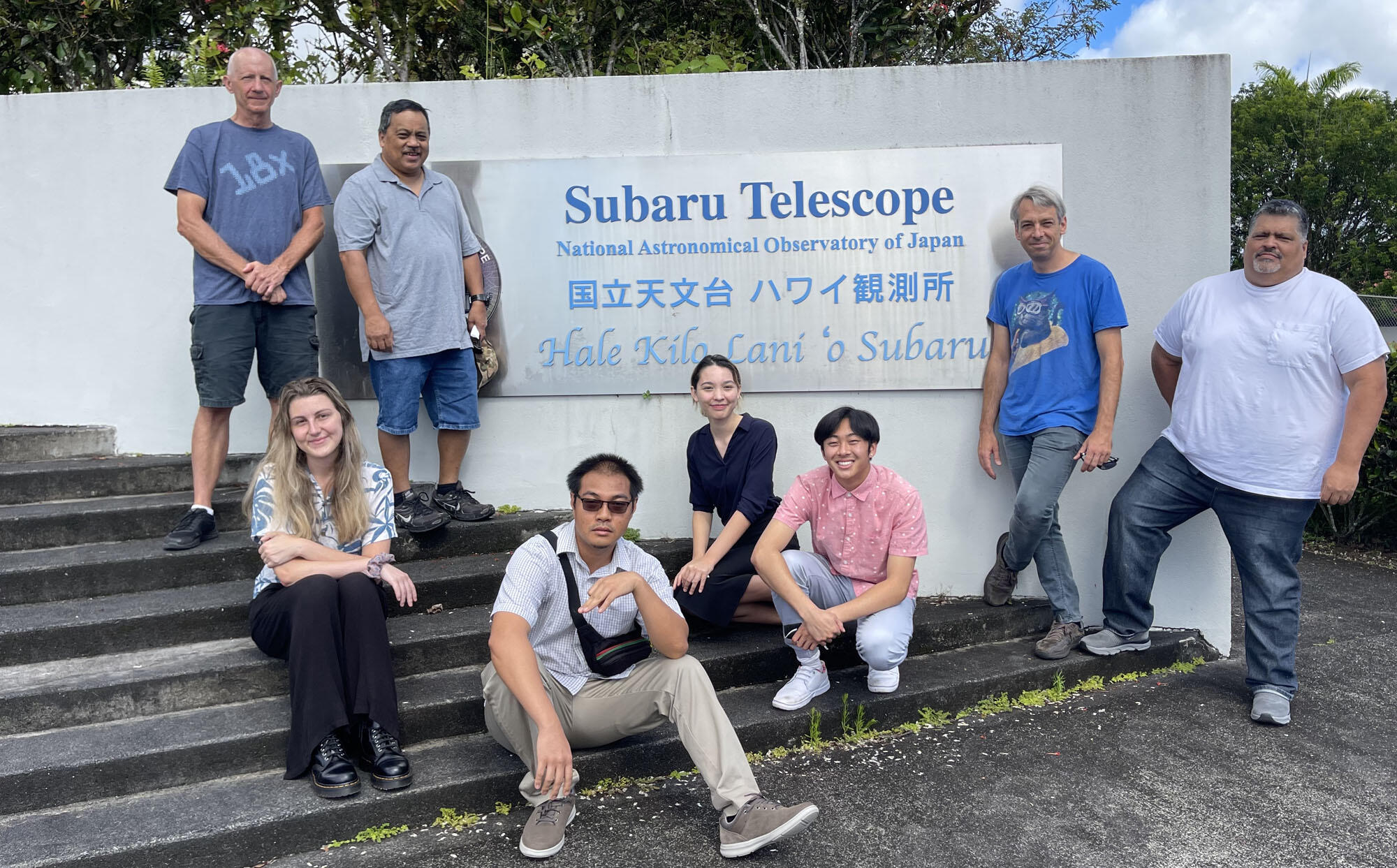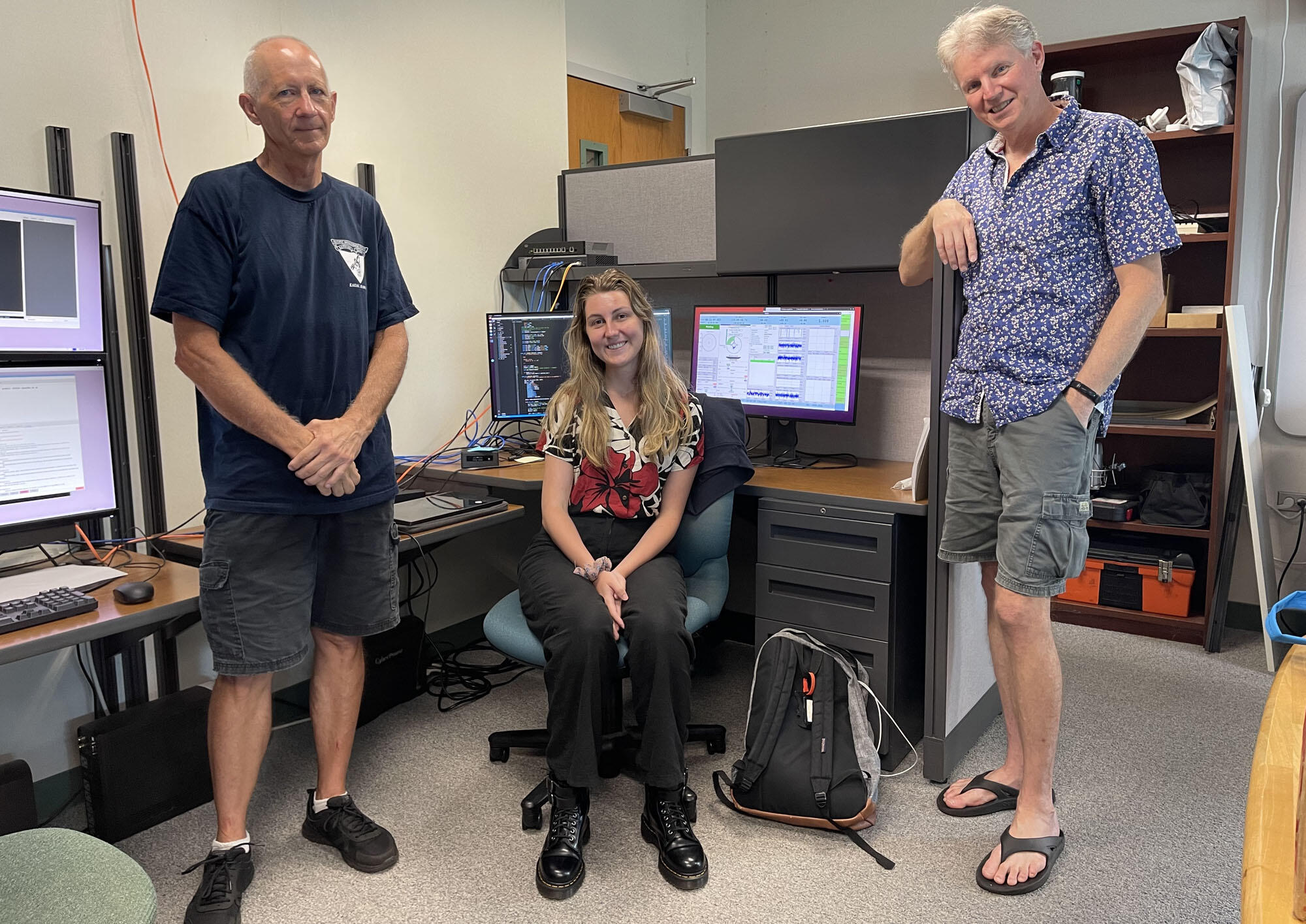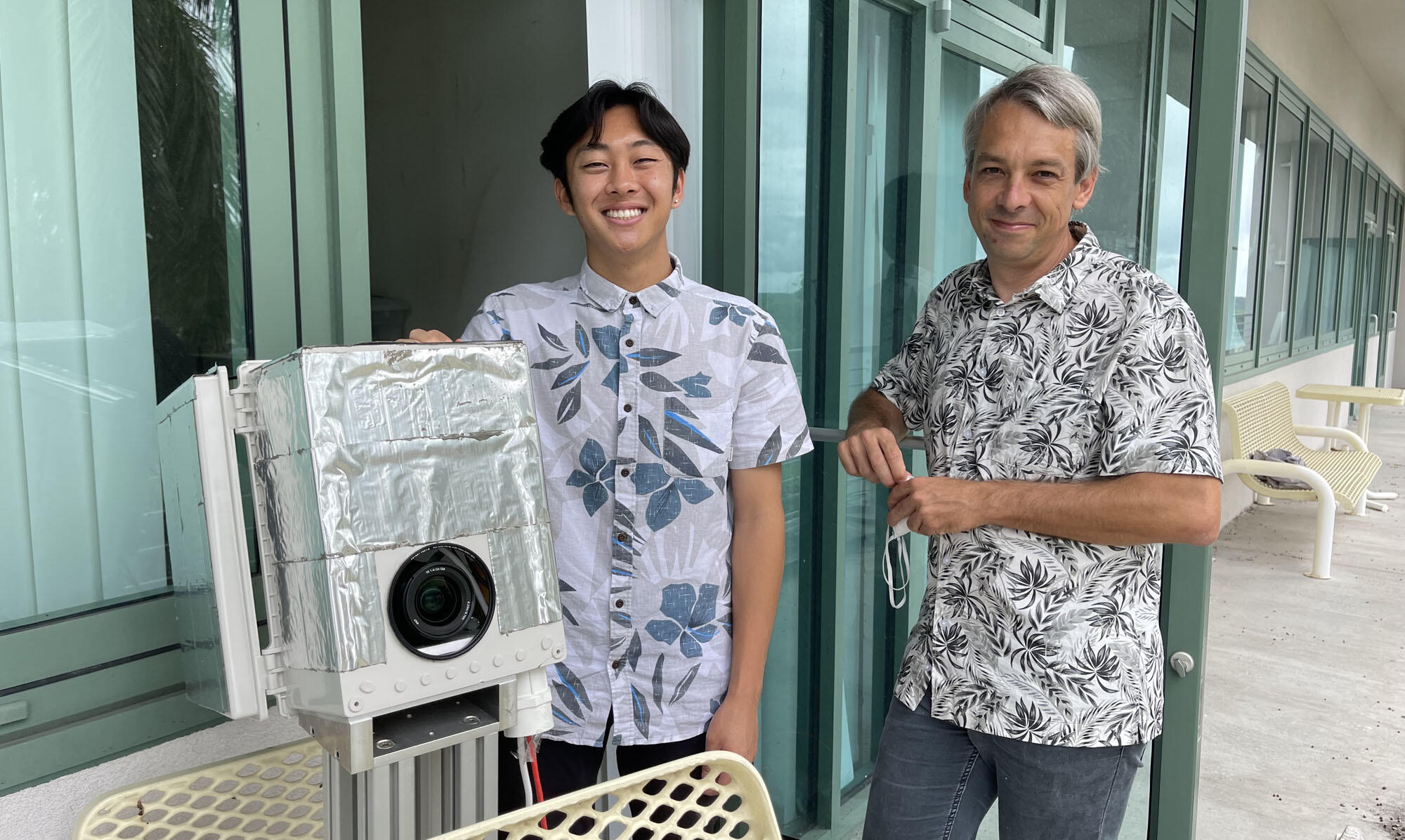For nearly two decades, the Akamai Workforce Initiative (AWI) has helped college students from Hawai`i complete real-life science or technology projects in a professional setting during an eight-week summer internship program. The Subaru Telescope staff has participated in this program since 2005, mentoring more than 30 students who each worked on a project that made a direct contribution to the organization. This summer, Subaru Telescope was fortunate to have four stellar interns out of 32 Akamai Internship recipients: Christopher Chock and Katie Stevens currently attend Gonzaga University, Jenny Brown attends Kapiolani Community College, and Michael Aquino is at Honolulu Community College.

Figure 1: Group photo of the Akamai interns and their mentors at Subaru Telescope. (Credit: NAOJ)
"STEM careers are tough, and I think what this does is give students an opportunity to see a real-world application of what they are learning in school and maybe gives them a chance to come back to Hawai`i after college and get a job," says Subaru Telescope software engineer Russell Kackley, who has been a mentor for AWI for seven years.
The goals of the Akamai program are to address the technical workforce needs in Hawai`i and advance students into science, technology, engineering and mathematics (STEM) careers. This year’s interns worked on important projects proposed by our Subaru Telescope staff that will contribute greatly to the success of the organization in the future as well as to the students' career development.
Michael Aquino, a Honolulu Community College student majoring in computer security network technology worked under mentor Kiaina Schubert, senior system administrator, on upgrading the Suabru Telescope's observation control system network to achieve higher network speeds, and also to provide a fail-over to prevent server interruption and data loss. "The expectation was to really just to have a prototype to install at the base facility so we could see how it works," says Schubert. "That was very successful so we put it into a critical environment at our summit facility. Michael was able to configure it and test it and it’s ready to go. His leg work was huge for us. More than half the work is done." Says Aquino, "I feel really good about what I was able to accomplish. I was able to take the things I learned in school and put it into a real system."
Jenny Brown, a student at Kapiolani Community College studying natural science and engineering, worked on the setup and analysis of proposed data loggers used in the telemetry system for Subaru Telescope’s Prime Focus Spectrograph, a powerful new instrument in development, with mentor Lucio Ramos, Subaru Telescope instrumentation and electronic technician. Within the telemetry system of the spectrograph, data loggers monitor temperature, coolant flow, and pressure. Due to the demands of the telescope instrumentation, the life cycle of current data loggers are scheduled to be updated with new ones from the same manufacturer. The new data loggers will serve as on-site spares and eventually be phased in as replacements. "Serving to minimize the downtime during installation for Subaru technicians, the project’s aims were the following: to confirm the presence of required features, test under controlled conditions, set up preliminary configurations, and create user documentation," explains Brown. "I really like the sense of community here at Subaru Telescope. Teamwork is one of the reasons why I got into engineering. I saw it in action here!"
"The most challenging aspect of this internship was the learning curve," says Katie Stevens, who worked on a software upgrade for the Subaru Telescope Simulator (TELSIM) under mentors Kackley and software division chief Eric Jeschke. The telescope control system for the Subaru Telescope on Maunakea was developed by a subcontractor and, at the time it was developed, there was no requirement for it to be able to run in simulation mode. Having a telescope control system simulator such as TELSIM to test observation scripts is essential for conserving resources. Stevens is a student at Gonzaga University studying computer science. "The TELSIM software upgrade required me to learn it first before I could add my own code. It was great to work on a project of this size. The suite of new features I was able to program will allow TELSIM to return more meaningful and accurate results when observing scripts are tested, and it will also serve as a valuable training aid for new telescope operators."

Figure 4: Katie Stevens (middle) and her mentors Russel Kackley (left) and Eric Jeschke (right). (Credit: NAOJ)
Christopher Chock, a Gonzaga University student majoring in electrical engineering with a minor in physics, built and deployed a highly sensitive video camera system for astronomical observations on Mauna Loa that will serve as both a live-stream and will transfer uncompressed raw data in high-resolution for analysis. The objective of this project — under his mentors SCExAO project scientist Olivier Guyon, PANOPTES post-doc fellow Preethi Krishnamoorthy, PFS software engineer Wilfred Tyler Gee, and senior support astronomer Ichi Tanaka — was to deploy a video system that transfers uncompressed RAW data with a 4K resolution, 10-bit 4:2:2 video, and up to 60 fps into two systems: a Next Unit of Computing (NUC) computer for live streaming and a remote computer for data analysis. Chock also led the mechanical design phase to deploy the new system. "The camera, capture card, and computer were assembled in a weatherproofed box and mounted at the Mauna Loa observatory," explains Chock. "Inside, a thermal-sensing fan and surge-proof power source were included to maintain temperature and power. Additionally, the capture card contains a secondary HDMI-passthrough output that can send data up to 4K resolution at 60 fps. In the future, the PANOPTES project will send the camera's high-quality, raw data to an external computer for scientific analysis."
"I think we did a good job of throwing all sorts of problems at him," says mentor Olivier Guyon. "We started from scratch and there were plenty of turns and twists and surprises. I think Chris handled them very well. I think we all worked well as a team."





